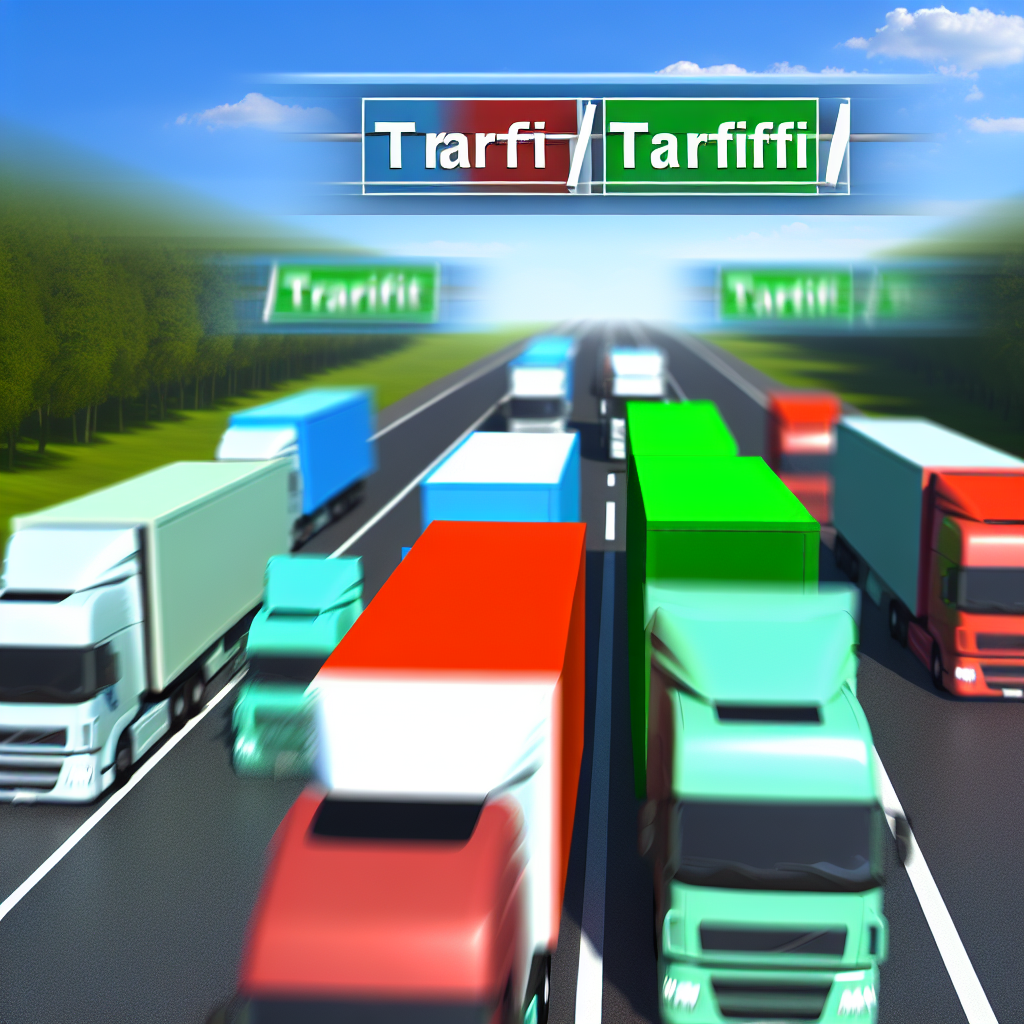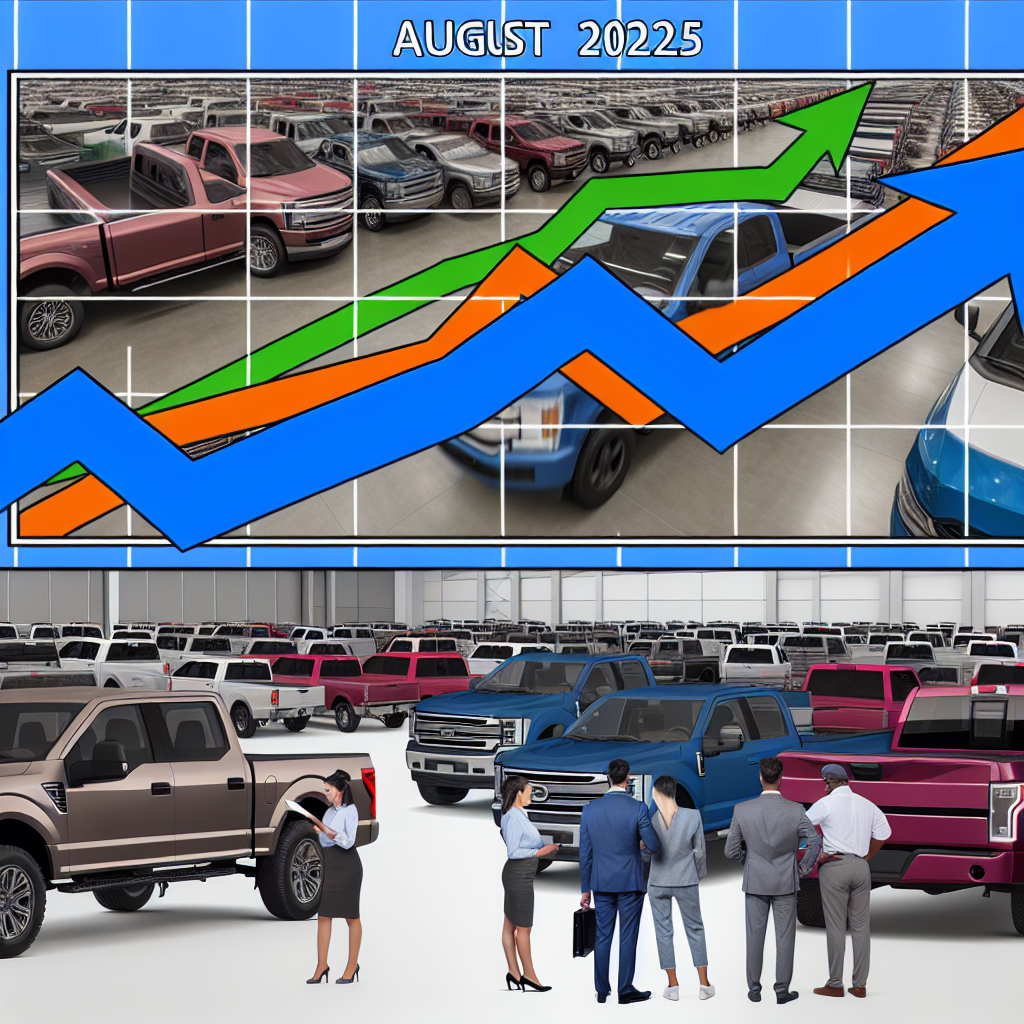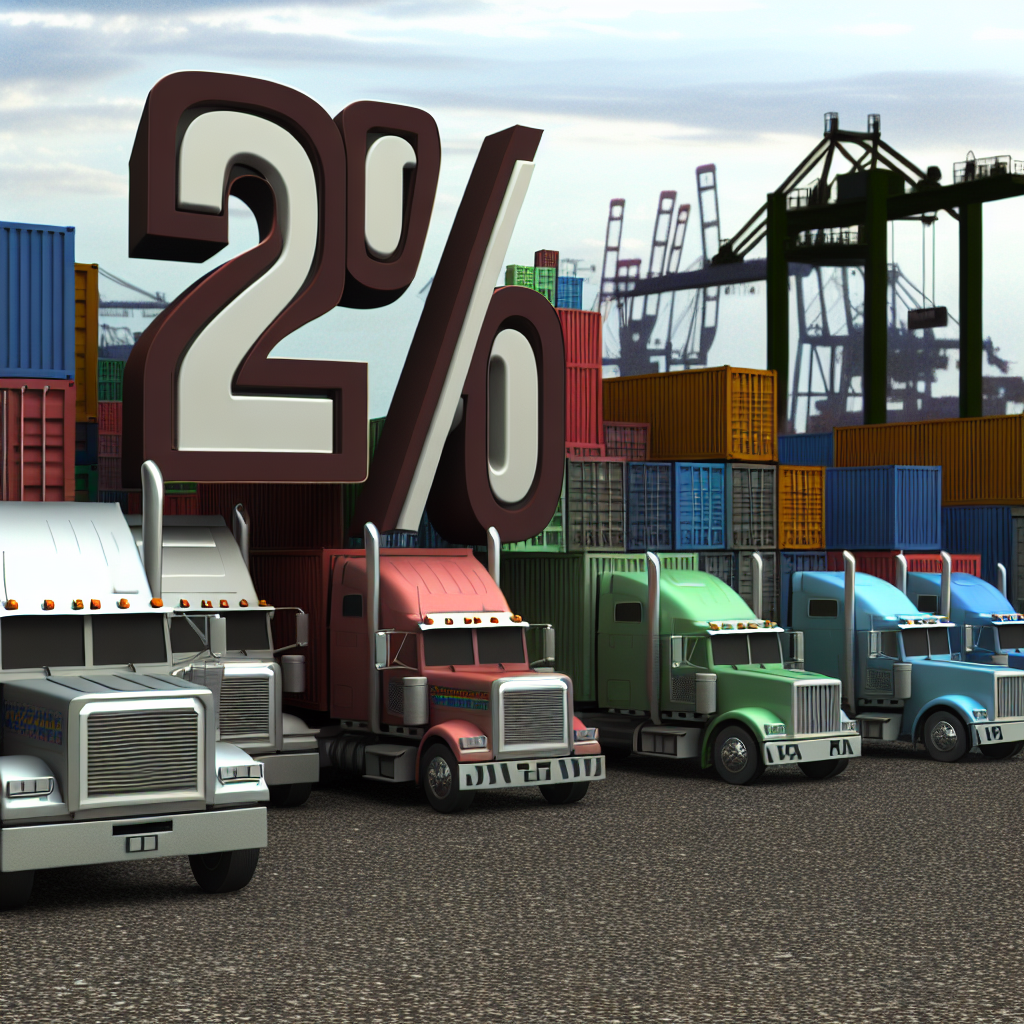In recent years, the trucking industry has faced significant disruption due to evolving tariff policies. These changes, especially the imposition of significant tariffs on imported trucks, have left both buyers and dealers uncertain about pricing and inventory levels.
Projections suggest potential cost increases ranging from 15% to as high as 30% for various classes of trucks. As a result, fleet operators are anxious about inflated prices and are becoming hesitant to make purchases. This has led to inventory shortages at dealerships, creating a stalemate in the market.
Dealers now find themselves in a precarious situation. They must decide whether to order more trucks, which may carry higher tariffs, or to wait and risk missing out on essential inventory. This dilemma reflects a broader trend of volatility in the trucking sector, which not only affects the immediate buying power of customers but also poses long-term challenges for dealers trying to sustain their businesses in an unpredictable environment.
Understanding these dynamics is crucial for anyone involved in the trucking sector. The ramifications of these tariffs are likely to extend well beyond simple pricing adjustments, impacting the overall landscape of the industry.



Summary of Current Tariff Rates and Impacts on Truck Pricing
The trucking industry in 2025 is currently facing substantial changes due to the implementation of a 25% tariff on imported Class 8 trucks. This tariff is part of a broader set of tariffs that significantly impact trucking price inflation and the overall cost of essential materials like steel, aluminum, and copper. The new rates are projected to raise retail prices of various truck and trailer types dramatically, with the following estimates:
- Class 8 Trucks: Costs are expected to increase by approximately 15-24% due to trucking tariffs 2025.
- Dry Van and Reefer Trailers: Price hikes are anticipated in the range of 16-18%.
- Heavy-Duty Trailers: The impact could vary between 17-30% depending on the specific model and intended use.
These increases translate into a considerable financial burden for fleet operators and trucking companies. For instance, the cost of a new Class 8 truck could rise by about $35,000 due to the tariff alone, leading to an estimated total price of approximately $238,000 when considering the Federal Excise Tax (FET) on top. As a result, many fleet operators are feeling pressured to accelerate their purchases before prices rise further unrestrained amidst trucking price inflation, even though many are still hesitant, fearing inflated long-term costs.
Additionally, the ongoing tariff situation is transforming market dynamics, impacting the trucking industry significantly. Operational costs will rise sharply for trucking companies, leading many to increase freight rates to maintain margin levels. Industry reports indicate that flatbed trucking rates are at their highest since 2017 as shippers rush to stockpile inventory amidst tariff uncertainties. This volatility may lead to decreased demand for trucking services, as shippers explore alternative transportation methods or reevaluate their supply chains.
In summary, the new tariffs not only inflate equipment costs but also threaten to destabilize pricing structures and operational logistics within the trucking industry. Fleet operators must navigate this complex landscape carefully, as the ramifications are likely to extend beyond immediate pricing adjustments, influencing the overall health and sustainability of the trucking operations in the United States.
Implications of Pricing Increases for the Trucking Industry
The imposition of tariffs has significantly impacted the trucking industry, leading to adjustments in pricing strategies, sales declines, and shifts in consumer behavior amidst ongoing trucking price inflation.
Manufacturers Raising Prices Due to Tariffs
- Mitsubishi Motors announced a 2.1% average price increase on its U.S. vehicles, citing tariff-related cost pressures. In April 2025, a 25% tariff on car imports from Japan prompted Mitsubishi to pause vehicle deliveries to U.S. dealers. Despite these challenges, the company reported an 11% increase in U.S. sales during Q1 2025. [Reuters]
- Hyundai alerted its U.S. dealers about potential price increases due to the 25% tariffs on imported vehicles and parts. Analysts project that these tariffs could add approximately $3,000 to U.S.-made vehicles and $6,000 to imports from Canada or Mexico. [Reuters]
Case Studies of Affected Dealers
- Truck and trailer dealers face significant challenges due to the 25% tariff on imported vehicles and parts. Estimates suggest an additional cost of $3,000 for domestically manufactured trucks and up to $6,000 for imported models. Many dealers adjust pricing structures by reducing discounts or increasing retail prices to protect margins while also exploring alternative suppliers or markets to mitigate tariff impacts. [pockettacotruck.com]
Statistics on Overall Market Shifts
- Truckload demand has softened due to tariffs, with the Producer Price Index (PPI) for truckload services falling 24.6% below its May 2022 peak, indicating a soft market. Class 8 truck sales declined by 9.4% year-over-year in Q1 2025, with April bookings down 52.1%. Major truck manufacturers have lowered their 2025 outlooks, citing tariff pressures and market uncertainty. [jusdaglobal.com]
- Consumer behavior has shifted significantly due to rising costs and tariffs, with a Federal Reserve survey revealing that about 75% of firms are passing tariff-related costs to customers. Interestingly, 72% of consumers report adjusting their shopping habits in response to these increases, often leading them to opt for less expensive brands or delay making discretionary purchases. [axios.com]
In summary, tariffs have led to increased vehicle prices, operational challenges, and significant shifts in market dynamics and consumer behavior within the trucking industry. As companies adapt their pricing strategies and navigate these changes, the long-term ramifications will be crucial for the health of the industry overall.
Dealer Hesitance Amid Tariff Uncertainty
Tariff uncertainties have significantly influenced inventory ordering decisions within the trucking industry, leading to dealer hesitance and strategic adjustments.
Impact on Dealer Inventory Decisions
The introduction of tariffs has led to increased costs for trucks and trailers, causing dealers to reconsider their inventory strategies. Dan Moyer, a senior analyst at FTR, estimated that tariffs could add 15 to 24 percent to the cost of Class 8 trucks and 16 to 18 percent to dry van and reefer trailers. This has resulted in dealers being cautious about stocking units subject to tariffs, fearing potential losses if tariffs are lifted. Kyle Treadway, dealer principal at Kenworth Sales Company, expressed this concern:
“We’re hesitant (to order) because if the tariffs go away, we’ll have an expensive truck.” [ccjdigital.com]
Decline in Truck Orders
The anticipation of tariffs has also led to a notable decrease in truck orders. In October 2025, more than 60 percent of surveyed truck dealers reported decreased orders year over year, with about 50 percent indicating that new truck demand was deteriorating. [equipmentfinancenews.com] Additionally, preliminary North American Class 8 net orders in April 2025 plunged 54 percent both month-over-month and year-over-year to just 7,400 units—the lowest order total since May 2020. [georgia.org]
Dealer Concerns and Market Outlook
A survey of 160 North American dealerships found that 70 percent cited tariff uncertainty as their top concern, followed by rising equipment costs (66.3 percent) and financing challenges (49.1 percent). The majority of dealers described their 2025 market outlook as concerned or very concerned, with nearly 75 percent expecting buyers to pause purchases, leading to longer equipment replacement cycles. [constructiontxnews.com]
Manufacturer Responses
Manufacturers are also adjusting to the tariff landscape. Companies like Daimler Truck and Traton are leveraging production facilities in Mexico to avoid tariffs under the US-Mexico-Canada Agreement (USMCA). In contrast, U.S.-based manufacturers such as Paccar are experiencing significant cost premiums and losses from tariffs, estimated to reach $75 million in Q3 2025. [fritzke-truckinginc.com]
Conclusion
The trucking industry is navigating a complex environment shaped by tariff-induced cost increases and market uncertainties. Dealers are exercising caution in inventory ordering to mitigate potential financial risks, while manufacturers are exploring strategic adjustments to production and sourcing to adapt to the evolving trade policies.
| Vehicle Type | Projected Cost Increase (%) |
|---|---|
| Class 8 Trucks | 15-24% |
| Dry Van Trailers | 16-18% |
| Reefer Trailers | 16-18% |
| Other Heavy-Duty Trailers | 17-30% |
As tariffs continue to reshape the landscape of the trucking industry, manufacturers are increasingly forced to reconsider their pricing strategies to accommodate the hefty financial burdens imposed by these levies. According to research, tariffs have been projected to inflate costs significantly, with estimates suggesting increases of 15-24% for Class 8 trucks and even higher for various trailer types. This spike in production costs has led manufacturers like Paccar and General Motors to express concerns that they cannot absorb these expenses indefinitely.
Notably, General Motors anticipates a staggering $5 billion in tariff-related expenses, prompting them to consider passing these costs along to consumers. In practical terms, this means buyers can expect higher prices for new vehicles—a necessary adjustment in an industry grappling with increased operational costs. Industry analyst Dan Moyer highlights this predicament, mentioning that, “We don’t really know what it’s going to cost, and that obviously makes it challenging in an environment where we’re trying to pass those on to our customers.”
Moreover, as freight rates rise due to inflated trucking costs, consumers will inevitably feel the impact through increased prices on delivered goods. This cascading effect not only strains consumer budgets but also influences purchasing behavior in the marketplace, as buyers are likely to rethink their spending in light of rising costs. Thus, the interplay between tariffs and pricing strategies underscores a complicated economic landscape where manufacturers must balance financial viability against consumer demand, leading to inevitable price adjustments that ripple throughout the economy.
User Adoption Data Post-Tariffs
The imposition of tariffs in 2025 has triggered a significant impact on user adoption rates of trucks in the U.S. market, characterized by immediate consumer reactions and shifts in purchasing habits. Here’s a comprehensive overview:
Surge in Pre-Tariff Purchases:
As the tariffs were anticipated, many consumers rushed to make truck purchases ahead of the price increases. This resulted in a marked rise in retail sales, particularly in March 2025, with vehicle and parts dealers reporting a 5.3% increase in sales as buyers sought to secure vehicles before the tariff imposition.
Substantial Price Increases:
Following the tariffs’ implementation, truck prices surged, adding significant amounts (up to $6,200 for a pickup) to the overall costs. Such increases directly influenced consumer buying behavior, leading to a tempered demand as buyers refrained from making new vehicle purchases amidst escalating costs.
Shift in Market Preferences:
In response to high prices, consumers began to reconsider their purchasing decisions, leaning towards cheaper models or delaying purchases altogether. Analysts projected a potential reduction in U.S. auto sales by as much as 10%, highlighting the tariffs’ squeezes on consumer budgets.
Domestic Production Boost:
Tariffs prompted many automotive manufacturers to increase domestic truck production while scaling back operations in countries affected by the tariffs. This shift reflected a long-term adjustment strategy to regain market share and maximize profits in a volatile pricing environment.
Long-Term Adoption Trends:
The complications arising from increased vehicle prices and slower new vehicle orders suggest a more cautious market outlook. Analysts predict that these trends could result in a long-term decline in sales, with up to 1.3 million fewer truck sales projected for the year due to price and supply chain challenges.
In summary, while initial consumer reactions saw a surge in truck purchases to avoid future price hikes, the long-term outlook is marked by increased consumer hesitance, upward price pressures, and an overall decline in adoption rates within the truck market.
Conclusion
The trucking industry stands at a critical juncture, shaped by significant tariff policies that have reshaped the terrain of truck sales and pricing. Throughout this article, we examined how the recent imposition of a 25% tariff on imported Class 8 trucks has raised costs by an estimated 15% to 30% for various vehicle types. This spike in production expenses has led to caution among dealers, who are hesitant to stock their inventory amid fears of inflated prices and market instability. Additionally, the cascading effect of these tariffs reverberates throughout the supply chain, with manufacturers and fleet operators alike grappling with increased operational costs that will inevitably impact freight rates for shippers and consumers.
As we consider the long-term implications of these policies, it is clear that the trucking industry must adapt to an evolving environment characterized by uncertainty and heightened financial pressures. Fleet operators may feel compelled to expedite purchases in the short term, but the overall market dynamics point towards a potential slowdown in orders as buyers reevaluate their options in light of increasing prices. The interplay between tariffs, market demand, and purchasing behavior will be pivotal in shaping the future of truck sales.
Thus, stakeholders in the trucking industry—from dealers to fleet operators—should maintain a vigilant eye on how these tariff changes could influence not only immediate purchasing decisions but also the overarching health of the market in the years to come. As developments unfold, the industry’s resilience and adaptability will be crucial in navigating this challenging landscape, ensuring that stakeholders are well-prepared for the road ahead.
As dealers grapple with the uncertainties brought on by tariffs, their hesitance to maintain robust inventory levels exacerbates the financial burdens faced by all stakeholders. When dealers are cautious about ordering new trucks, fearing the financial implications of tariffs, they inadvertently contribute to a tightening of the market. This leads to a reduced supply of available trucks, creating upward pressure on prices. Consequently, as demand persists or escalates in the face of diminishing inventory, manufacturers are compelled to raise costs to offset the lost economies of scale. Thus, the cycle of dealer hesitance not only reflects their immediate concerns but also instigates broader price increases that impact fleet operators and consumers alike.
This interconnectedness underscores the significance of understanding dealer strategies within the context of rising costs. Without adequate inventory, dealers are left with fewer options, leading to a reliance on higher pricing strategies as they attempt to recover costs associated with their cautious approach. In this volatile market landscape, it becomes evident that the hesitance to order is not just a dealer’s dilemma; it reverberates throughout the industry, influencing overall cost structures and pricing strategies that eventually affect end consumers.


